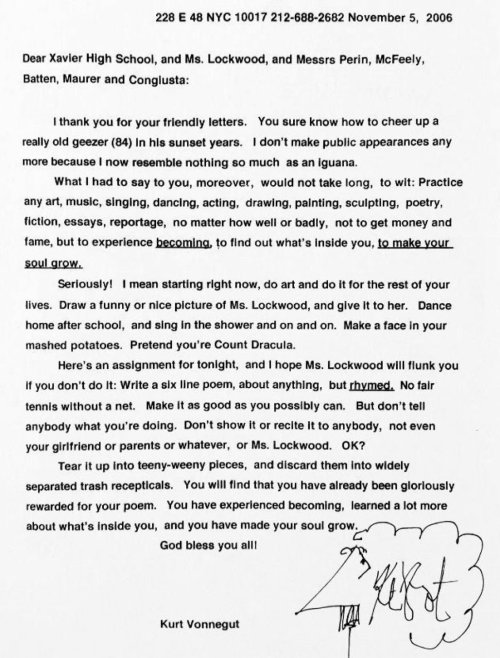To-seeking - Ej's Inspo








More Posts from To-seeking and Others
How to write: ethnicity & skin colour

requested by: anonymous request: How exactly can I describe a characters ethnicity/skin color casually, without it sounding like a specific scene that just exists to describe the skin color? I hope this makes sense lmao… I just want to write a scene where I casually mention someone’s ethnicity or skin color
description of appearance: No matter if skin colour or hairstyle or clothes, a text is more dynamic if you don't dedicate an entire scene/paragraph to it but rather sprinkle the necessary information in here and there. However, there can be instances where it's conducive to the plot to put that entire paragraph (e.g. introducing a new important character with backstory). Otherwise, I'd say try to keep it short and put it where it serves the plot.
ways to incorporate...
... a description of appearance:
when a character makes their first entrance (describe everyone's colouring - POCs' and white characters')
the impression their complexion makes together with their clothes: "the bright yellow of their shirt complemented their dark skin"
the way their colouring interacts with lighting: "the grey weather took away the rosy hue of their fair skin"
when appearances create a contrast: "I immediately noticed them because they were the only other black person"
... ethnicity:
let the characters mention it where it makes sense
regarding the narrator you've chosen for your story, it can also be blended into an inner monologue
include parts of their culture: traditions, terms, family, etc. (this also allows to bring up their ethnicity repeatedly over the story and not only at the beginning)
show their struggles: are they affected by social struggles? then show it!
words to use to describe skin colour:
... basic colour descriptions:
brown
black
beige
white
pink
... more specific colours (try sticking to familiar/common words that can be easily visualised):
amber
bronze
copper
gold
ochre
terracotta
sepia
sienna
porcelain
tan
... prefixes or modifiers (can be easily combined with basic colours):
dark
rich
warm
deep
fair
faint
light
cool
pale
... undertones (pre-dominant colours underneath the skin - often warm or cool, sometimes also neutral and olive):
yellow
orange
coral
golden
silver
rose
pink
red
blue
... avoid food analogies as it's often received as offending, fetishising, and/or objectifying.
That's all I can provide as of now but I'm sure you guys have aspects to contribute. I'm very interested to hear your thoughts, so please feel free to add to this post whatever you like to/can share <3
And for more information, maybe also check out @writingwithcolor for more specialised posts on the topic <3
me: *writes fic*
me: great! time to post to ao3-
ao3 summary box: *exists*
me:
ao3 summary box:
me:
ao3 summary box:
me:
basically I think that if your protagonist doesn’t want to fuck someone so bad it makes them look stupid, then there probably isn’t enough energy in your story. “Fuck someone” isn’t literal btw—they can want to uncover the secrets of their parent’s death, they can want to prove their worth, they can want a donut from one particular bakery—it can be anything so long as they want it so bad that they’ll make decisions that make any sane person go “are you a moron??”, with little to no forethought, or even tons of forethought and this is still the option they chose. Because they want to fuck that thing so bad.
fifty ways to get to know your characters (and how to write them)
what is their name? and how does this fit their character?
last name?
do they have a middle name?
name a song that describes them
what are their pronouns?
gender and sexuality?
do they like someone romantically?
list five words to describe them
what about five dialogue tags to use consistently on this character?
what is their motivation?
do they consider themselves a good person?
colour that describes their personality
MBTI type
enneagram type
character they're based on
person they would bring down whilst dying
person they would kill if they had the chance
character they would get along with if they were in the same universe
character they would hate if they were in the same universe
artist they would listen to
artist they would hate
give them a theme song
make them a playlist! (see my other post for songs to put on that playlist, here)
make them a mood board
assign them an aesthetic
what are their strengths?
what about fatal weaknesses?
the one person who can convince them to do something they're stubbornly against
who would they kill for?
what tropes do they fall into?
fatal weakness (food edition)
book they would definitely read
language besides their mother tongue they would (have) learned
murder accomplice
thing that makes them go weak at the knees
most obscure thing they HATE
while we're there, biggest phobia
are they (would they be) a book or movie person?
are they a romantic
childhood experience that defines an aspect of their life
what is their age?
birth sign? / zodiac?
what constellation would they be
name a famous myth could they would have been the main character
old or new soul
assign them a smell
assign them a smell they like
can they swim?
street smarts or brain smarts?
what is this character's purpose to the plot?
I've already said that my number one piece of writing advice is to read.
But my number two piece of advice is this: be deliberate.
Honestly this would fix so many pieces of bad writing advice. Don't forbid people from doing something, tell them to be conscious and deliberate about it. This could help stop people from falling into common mistakes without limiting their creativity. Black and white imperatives may stop a few annoying beginner habits, but ultimately they will restrict artistic expression.
Instead of "don't use epithets": "Know the effect epithets have and be deliberate about using them." Because yes, beginners often misuse them, but they can be useful when a character's name isn't known or when you want to reduce them to a particular trait they have.
Instead of "don't use 'said'" or "just use 'said'": "Be deliberate about your use of dialogue tags." Because sometimes you'll want "said" which fades into the background nicely, but sometimes you will need a more descriptive alternative to convey what a character is doing.
Instead of "don't use passive voice": "Be deliberate about when you use passive voice." Because using it when it's not needed can detract from your writing, but sometimes it can be useful to change the emphasis of a sentence or to portray a particular state of mind.
Instead of blindly following or ignorantly neglecting the rules of writing, familiarize yourself with them and their consequences so you can choose when and if breaking them would serve what you're trying to get across.
Your writing is yours. Take control of it.
It probably sounds like I'm preaching to the choir here because most of my mutuals are already great writers. But I'm hoping this will make it to the right people.
Writing Realistic Characters - part 2
- Journal from their perspective. It can be hard to write compelling, realistic motivation for characters if you don’t understand them yourself. By journalling from their perspective, even if the content of the journal isn’t included in your story, you’ll essentially be thinking as the character. This should help you understand who they are and how they make choices and react to things, like a real person would.
- Answer “character questions”, but be careful when using lists found online. The internet is full of lists of questions for writers to answer when building characters, but not all of them are actually that important or useful. The fact is, it really doesn’t matter what a character’s favourite colour, animal or day of the week is (unless it’s relevant to your story… but it usually isn’t). When looking for question lists online, or making your own, focus on questions that have to do with your character’s personality, such as how they’d react to a situation or which values matter more to them.
- Make character charts! I can’t stress this enough — character charts are incredibly useful tools for writers and I don’t know what I’d do without them. They’re a great way to keep track of important information about your characters in an organized way that’s easy to access when you need to quickly check a detail. I’d also strongly recommend making your own charts, not using templates online (I find it a lot easier to stay organized when I’m using my own organizational system). If you need a place to start, though, I normally create charts with 4 categories: role (protagonist, antagonist, etc.), name, identities (gender, ethnicity, sexual orientation, etc.), and description (just a brief few sentences about them). You can also make personality charts with things like their greatest flaw, greatest strength, story goals, etc.
- Come up with a few detailed memories/anecdotes from their past. Think of them as mini-stories you can drop into your main story to build a more realistic life around the character. These don’t have to be crucial to the plot, and should be brought up in a natural way, such as in conversation with another character or in the main character’s thoughts. For example, your MC’s best friend might compliment her necklace, and she tells them how her sister gave it to her as a birthday present before moving away. You can also use these anecdotes to drop in important information in a non-obvious way. Continuing the example above, the MC could mention that her sister has the same design necklace, but in green. Later, this becomes a clue, when she finds the green necklace outside the villain’s lair.
- Keep a record of their backstory. This one doesn’t really need much explaining… Just keep notes of your character’s backstory as you come up with it so you don’t risk inconsistencies, which tend to break down realism.
- Remember that the reader can’t see what’s in your head. Your characters may be fully developed, realistic people in your head, but that makes it easy to forget that your readers don’t automatically understand them the way you do — they only know what’s on the page. Asking other people to read your work can help you understand how your characters come through to an audience, but if you don’t want to do that, just re-reading it yourself is also helpful. If you do the latter, though, go through an entire chapter at a time, the way a reader would, not small sections.
-
 webweavecollection reblogged this · 1 month ago
webweavecollection reblogged this · 1 month ago -
 meeyaaah reblogged this · 2 months ago
meeyaaah reblogged this · 2 months ago -
 meeyaaah liked this · 2 months ago
meeyaaah liked this · 2 months ago -
 supercoolswampert reblogged this · 2 months ago
supercoolswampert reblogged this · 2 months ago -
 labyrinthsend liked this · 3 months ago
labyrinthsend liked this · 3 months ago -
 the-loveliest-quotes reblogged this · 5 months ago
the-loveliest-quotes reblogged this · 5 months ago -
 astudyintheburningofhearts liked this · 5 months ago
astudyintheburningofhearts liked this · 5 months ago -
 dramadanoite liked this · 6 months ago
dramadanoite liked this · 6 months ago -
 ipw1c liked this · 6 months ago
ipw1c liked this · 6 months ago -
 thirteentheldritchterror liked this · 7 months ago
thirteentheldritchterror liked this · 7 months ago -
 stnightlight liked this · 7 months ago
stnightlight liked this · 7 months ago -
 zerosdiary liked this · 7 months ago
zerosdiary liked this · 7 months ago -
 stupidgrasshopper liked this · 8 months ago
stupidgrasshopper liked this · 8 months ago -
 gothgoregirl liked this · 10 months ago
gothgoregirl liked this · 10 months ago -
 stormundercover liked this · 10 months ago
stormundercover liked this · 10 months ago -
 skiesareblue liked this · 11 months ago
skiesareblue liked this · 11 months ago -
 fleshhbag liked this · 11 months ago
fleshhbag liked this · 11 months ago -
 dahjinseok reblogged this · 11 months ago
dahjinseok reblogged this · 11 months ago -
 mythsandfables liked this · 11 months ago
mythsandfables liked this · 11 months ago -
 systembroadcasting liked this · 11 months ago
systembroadcasting liked this · 11 months ago -
 very-cool-office reblogged this · 11 months ago
very-cool-office reblogged this · 11 months ago -
 emma-235 reblogged this · 11 months ago
emma-235 reblogged this · 11 months ago -
 emma-235 liked this · 11 months ago
emma-235 liked this · 11 months ago -
 lunadeluffy liked this · 11 months ago
lunadeluffy liked this · 11 months ago -
 heythered3lilahsblog liked this · 11 months ago
heythered3lilahsblog liked this · 11 months ago -
 vlvtrkii reblogged this · 1 year ago
vlvtrkii reblogged this · 1 year ago -
 beautifulandraretoevenexist reblogged this · 1 year ago
beautifulandraretoevenexist reblogged this · 1 year ago -
 existing-today liked this · 1 year ago
existing-today liked this · 1 year ago -
 starsfory liked this · 1 year ago
starsfory liked this · 1 year ago -
 curious-hermit liked this · 1 year ago
curious-hermit liked this · 1 year ago -
 happiness-runs liked this · 1 year ago
happiness-runs liked this · 1 year ago -
 saltypoetryangel liked this · 1 year ago
saltypoetryangel liked this · 1 year ago -
 810239 reblogged this · 1 year ago
810239 reblogged this · 1 year ago -
 jaden-treesters liked this · 1 year ago
jaden-treesters liked this · 1 year ago -
 chuparchup liked this · 1 year ago
chuparchup liked this · 1 year ago -
 iicaughttmyself reblogged this · 1 year ago
iicaughttmyself reblogged this · 1 year ago -
 thepiratewhodoesntdoanything reblogged this · 1 year ago
thepiratewhodoesntdoanything reblogged this · 1 year ago -
 face-index liked this · 1 year ago
face-index liked this · 1 year ago -
 raitah reblogged this · 1 year ago
raitah reblogged this · 1 year ago -
 better-in-the-rearview liked this · 1 year ago
better-in-the-rearview liked this · 1 year ago -
 transparentpapier liked this · 1 year ago
transparentpapier liked this · 1 year ago -
 tonksisunderrated reblogged this · 1 year ago
tonksisunderrated reblogged this · 1 year ago -
 yellow-faerie liked this · 1 year ago
yellow-faerie liked this · 1 year ago -
 the-nth-gatsy liked this · 1 year ago
the-nth-gatsy liked this · 1 year ago -
 whateverrworks liked this · 1 year ago
whateverrworks liked this · 1 year ago -
 thepopster55 reblogged this · 1 year ago
thepopster55 reblogged this · 1 year ago



